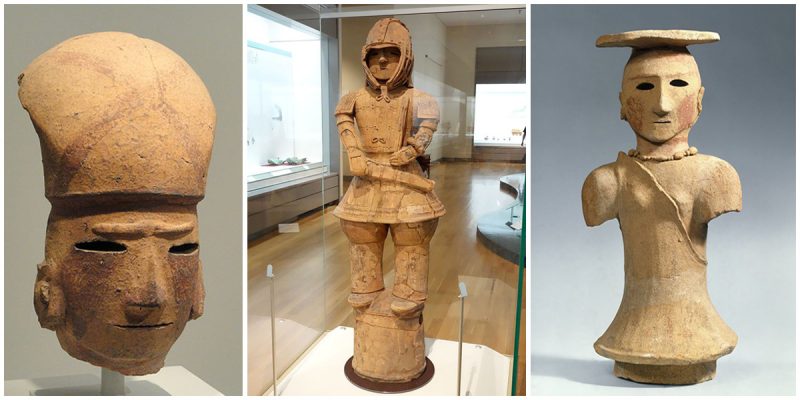The Haniwa (“clay cylinder” or “circle of clay” in Japanese) are terracotta cylinders and hollow sculptures that were made for ritual use and buried with the dead as funerary objects during the Kofun period (3rd to 6th centuries AD).
They were built for the Japanese elite from between the fourth and seventh centuries.
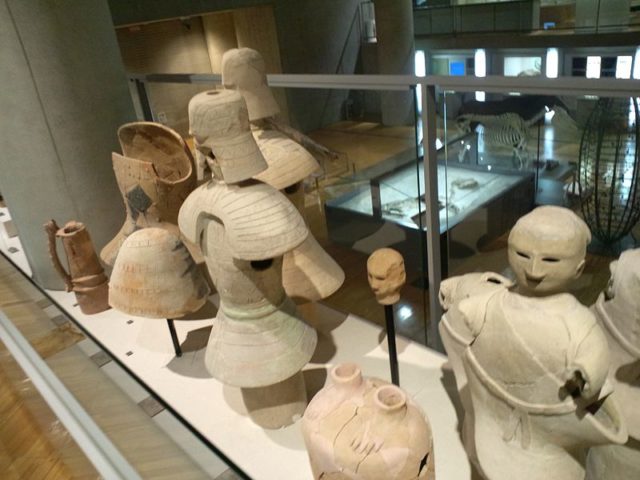
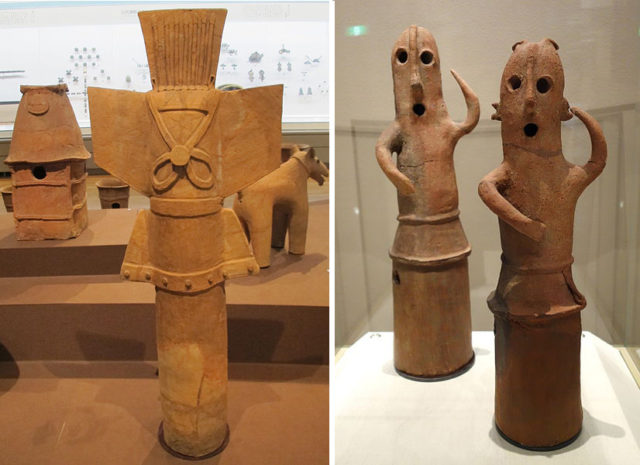
Throughout the Kofun era, enormous burial mounds called kofun (which in Japanese literally means ‘Old Tomb’) were constructed for powerful clan chiefs and massive quantities of haniwa were carefully placed on top of those colossal, mounded tombs.
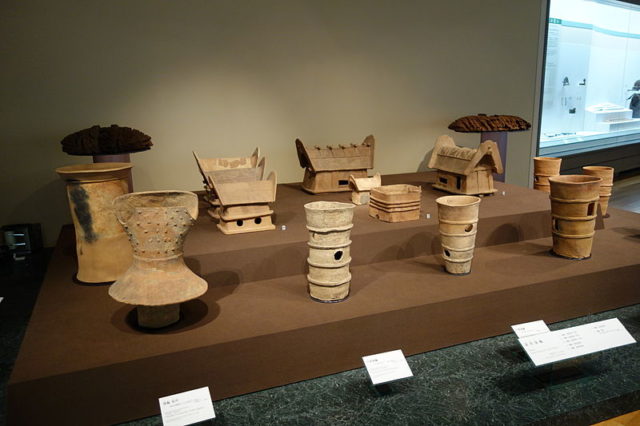

These figures were created according to the wazumi technique, in which mounds of coiled clay were built up to shape the figure, layer by layer. The first and most common shape was the simple cylinder, averaging 40-50 centimeters in diameter and one meter in height, which were used to mark the borders of a burial ground.
Later, from the early 4th century until the 6th century, the cylinders were surmounted by sculptural forms such as figures of humans, houses, female attendants, boats, military equipment, and many kinds of animals. The human figures were often decorated with incised geometric patterns and pigments of white, red, and blue.

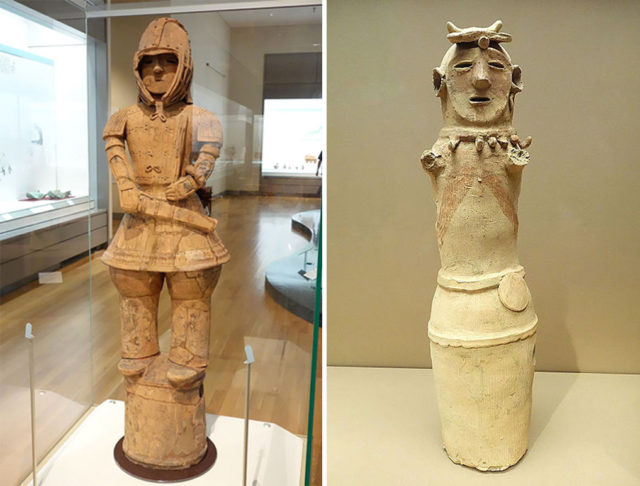
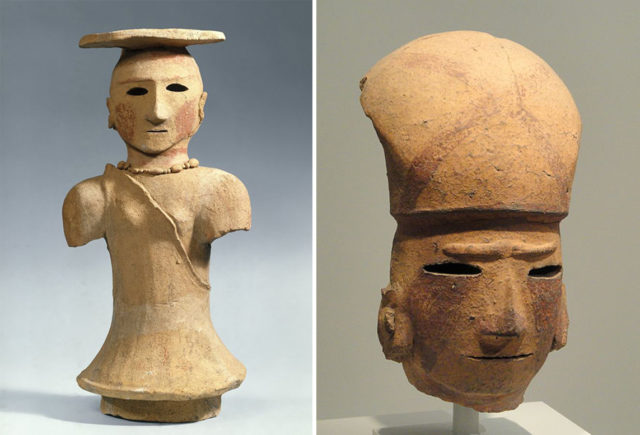
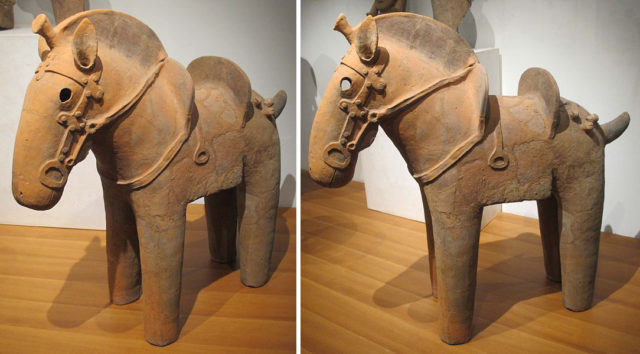
It is believed that the figures symbolized continued service to the deceased in the other world. There is a theory that the soul of the deceased would reside in the haniwa, as the earlier haniwa were placed on top of the funeral mounds. There are haniwa that are equipped with weapons and armor. These are thought to be containers for souls.
Besides decorative and spiritual reasons for protecting the deceased in the afterlife, it is thought that these figures were used as boundary markers for the borders of the gravesite. Unlike tomb figurines from other parts of the world, haniwa were erected on the exterior surface of the tomb mound rather than buried in the chamber with the deceased.
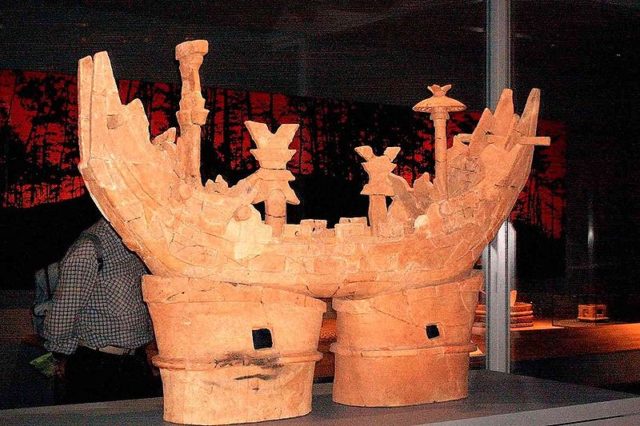
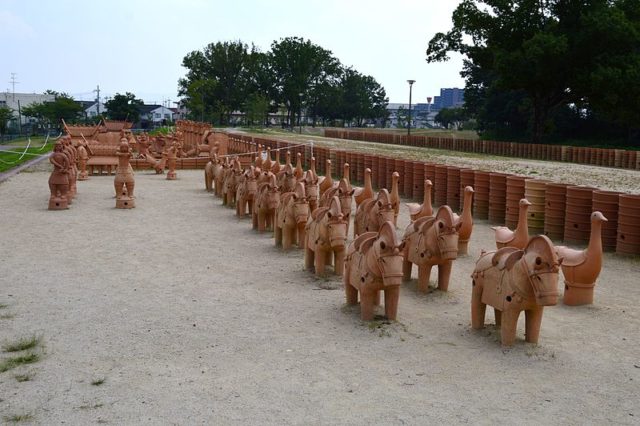
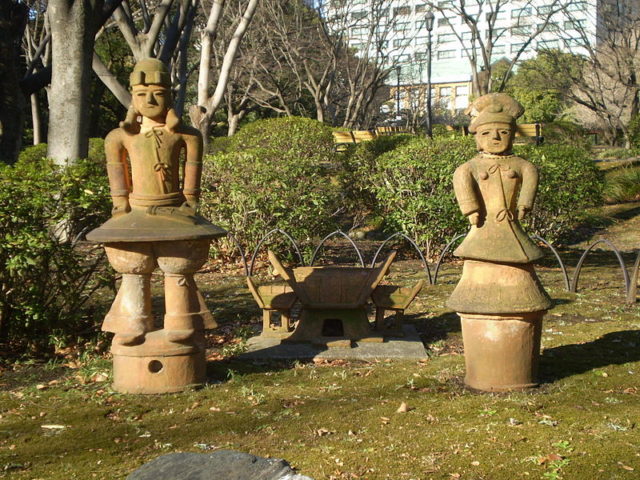
Since the late 1990s, their influence has reached far beyond the archaeological – from video games and trading cards to children’s cartoons like Kirby and Animal Crossing, they make regular appearances in contemporary Japanese culture.
The Tokyo National Museum has many haniwa human figures, but intact pieces are few. Most of the figures are either fragmentary or with certain missing parts.
